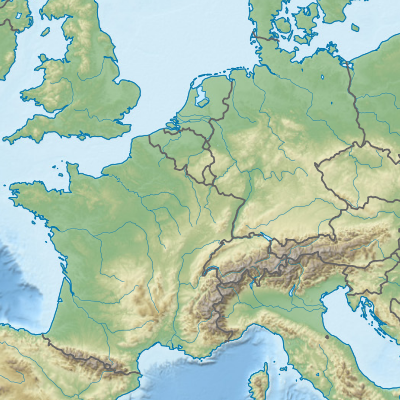A common solution to the perceived problem of Eberron having "too few people", with Sharn being very empty with 200,000 inhabitants for example, is to multiply the numbers by whatever fit your fancy (I've seen x10 often). The second most common solution is to reduce the distances (so countries like Breland don't have wide swath of empty, uncultivated area and a density similar to that of Siberia). I can see the interest in reducing distances, and I have seen map with a proposed reduced scales on reddit.
However, I know next to nothing about climate, and I wouldn't want players who might have their suspension of disbelief broken by population figures complain about the abruptness of climate transition. Northern Khorvaire has icecaps, Sharn is tropical... So my question is : if the whole world was smaller, could the climate change that much over a fewer distance, or does the variety of environment relies on having roughly Earth-sized planet?
[I'd like this thread not to devolve into "don't play with players who complain about population figures", if possible, I am just asking the collective wisdom about which of the two solutions feels better before implementing one].
Thanks in advence for your thoughts.
However, I know next to nothing about climate, and I wouldn't want players who might have their suspension of disbelief broken by population figures complain about the abruptness of climate transition. Northern Khorvaire has icecaps, Sharn is tropical... So my question is : if the whole world was smaller, could the climate change that much over a fewer distance, or does the variety of environment relies on having roughly Earth-sized planet?
[I'd like this thread not to devolve into "don't play with players who complain about population figures", if possible, I am just asking the collective wisdom about which of the two solutions feels better before implementing one].
Thanks in advence for your thoughts.





